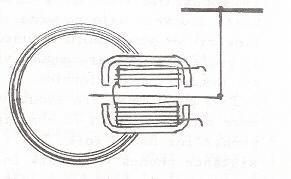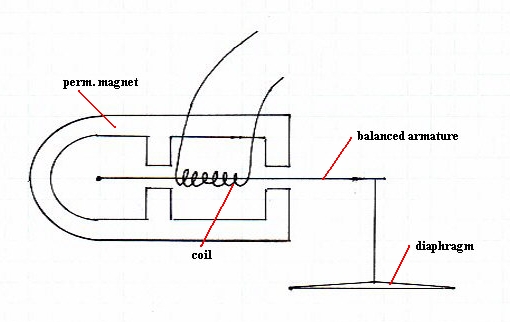Enter
Balanced Armature
headphones
such as Nathaniel Baldwin's vintage headphones.
See
Figure #2
Notice
the reluctance for the lines
of force
for the magnetic field is very low. The magnet field has an iron path
most
of the way.
Also
the "lever action" works on the
center
of the disk or diaphragm which also increases its efficiency.

Figure #2
What
more could you want???
OK
Enter
sound powered designs. See
figure #3
This is
basically a improved "Balance
Armature"
element with design improvements such as:
Duraluminum
diaphragms (a more
flexible disk,
mechanically attached so it did not have to be magnetic).
The
mass of the moving parts was
reduced (less
mass, more efficiency).
Coil
windings were improved.
On some
elements (RCA's) the magnetic
fields
are brought into play using laminated bars instead of solid iron.
These
and other improvements were
possible
partly because of better machining of parts at the time.

Figure #3

